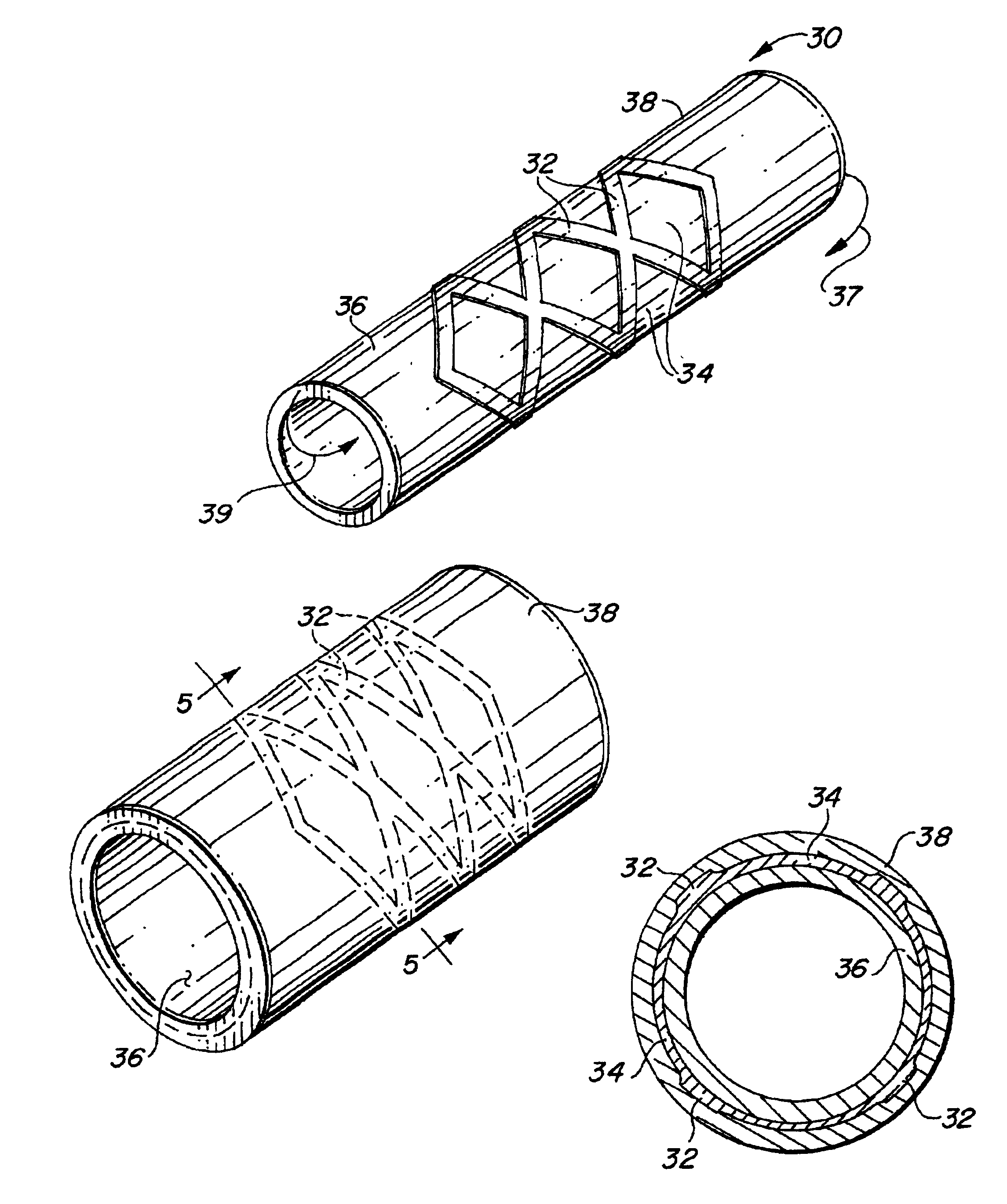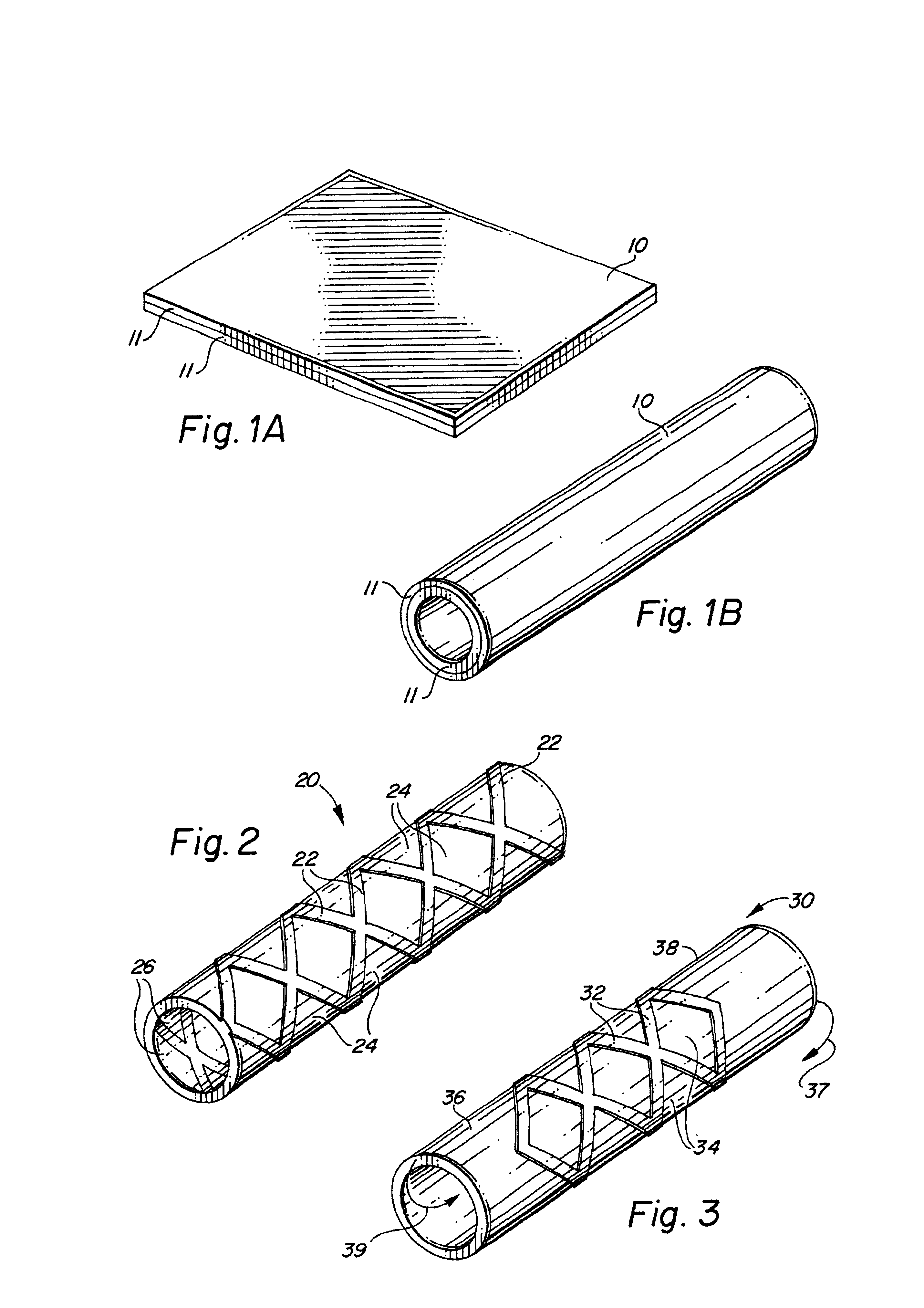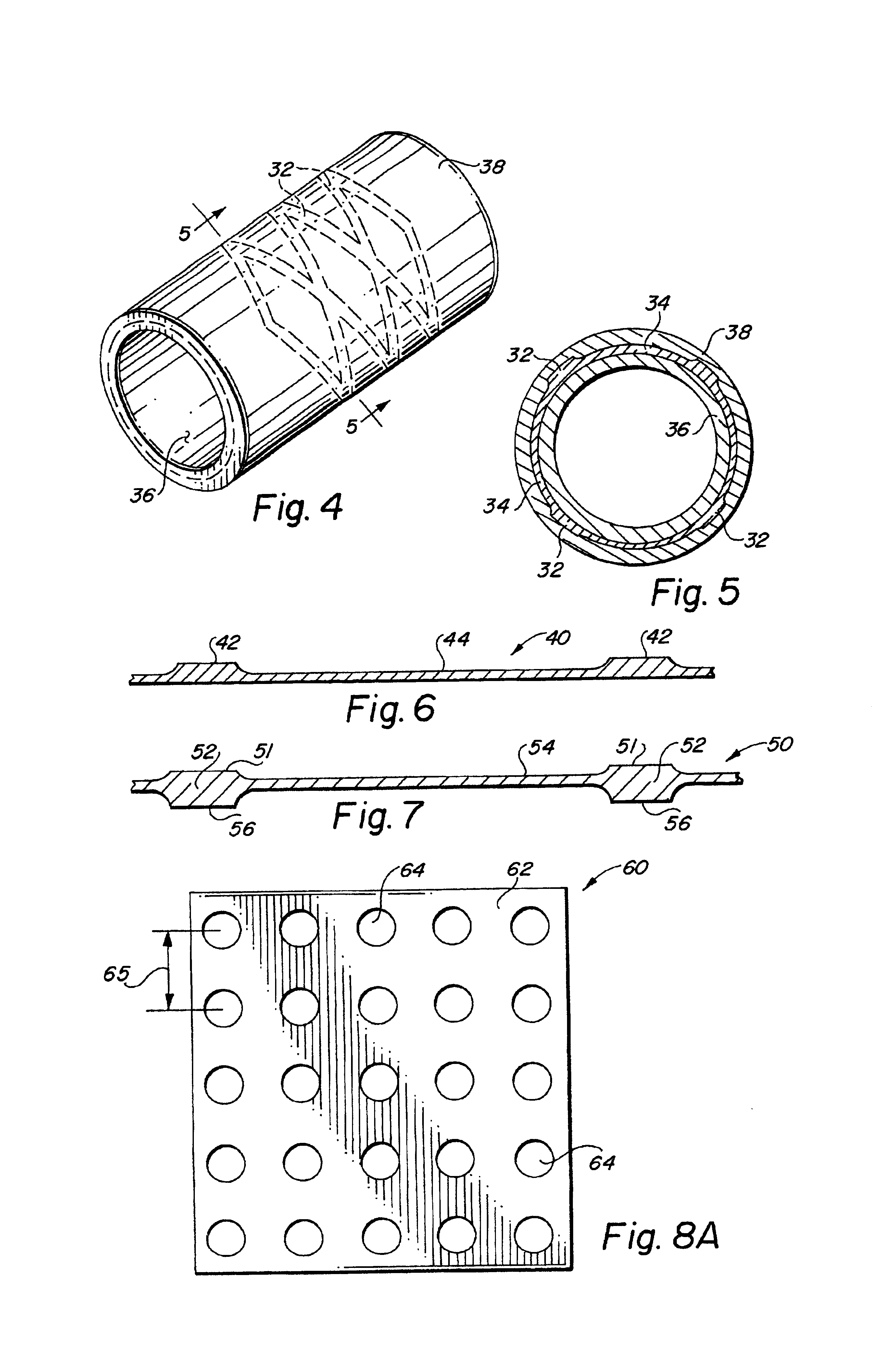Self-supporting laminated films, structural materials and medical devices manufactured therefrom and methods of making same
a laminated film, self-supporting technology, applied in the field of implantable medical devices, can solve the problems of contaminating residues, contaminating tools and lubricants, and not being used or developed in laminated metal foils, and achieve the effect of promoting graft healing in vivo
- Summary
- Abstract
- Description
- Claims
- Application Information
AI Technical Summary
Benefits of technology
Problems solved by technology
Method used
Image
Examples
example 1
Stent Formation By Sputtering
A ceramic cylindrical substrate is introduced into a deposition chamber with capabilities of glow discharge substrate cleaning and sputter deposition of carbon and stainless steel. The deposition chamber is evacuated to a pressure less than or equal to 2×10−7 Torr. Pre-cleaning of the substrate is conducted under vacuum by glow discharge. The substrate temperature is controlled to achieve a temperature between about 300 and 1100 degrees Centigrade. A bias voltage between −1000 and +1000 volts is applied to the substrate sufficient to cause energetic species arriving at the surface of the substrate to have hyperthermal energy between 0.1 eV and about 700 eV, preferably between 5-50 eV. The deposition sources are circumferential and are oriented to deposit from the target circumferentially about the substrate.
During deposition, the deposition pressure is maintained between 0.1 and 10 mTorr. A sacrificial carbon layer of substantially uniform thickness (±5%...
example 2
Stent Formation by Sputtering
The same operating conditions are followed as in Example 1, except that the substrate is tubular and selected to have a coefficient of thermal expansion different than that of the resultant stent. No intermediate layer of sacrificial carbon is deposited onto the substrate, and the outer surface of the substrate is etched with a pattern of recesses defining a desired stent pattern. The substrate is mounted onto a rotational jig within the deposition chamber and rotated at a uniform rate during deposition. Tantalum is used as the target material and deposited into the recesses of the substrate from a single stationary source. After deposition, the temperature of the substrate and the deposited stent are controlled to impart diametric differential in the substrate and stent and permit removal of the stent from the substrate.
example 3
Stent Formation by Ion Beam-assisted Evaporative Deposition
A cylindrical substrate is introduced into a deposition chamber that has capabilities of: substrate rotation and precise positioning, glow discharge substrate cleaning, ion beam-assisted evaporative deposition, and cylindrical magnetron sputtering. The deposition sources are (a) dual electron beam evaporative sources placed adjacent to one another at the base of the deposition chamber at a fixed distance from the substrate, these are used with simultaneous argon ion impingement onto the substrate from a controlled ion beam source, and (b) a cylindrical magnetron sputtering source with a carbon target capable of circumferentially coating a carbon sacrificial layer of substantially uniform thickness of between 10 and 200 Angstroms onto the substrate.
The substrate temperature is controlled to achieve a substrate temperature between about 300 and 1100 degrees Centigrade. The deposition chamber is evacuated to a pressure less tha...
PUM
| Property | Measurement | Unit |
|---|---|---|
| grain sizes | aaaaa | aaaaa |
| deposition rates | aaaaa | aaaaa |
| deposition rates | aaaaa | aaaaa |
Abstract
Description
Claims
Application Information
 Login to View More
Login to View More - R&D
- Intellectual Property
- Life Sciences
- Materials
- Tech Scout
- Unparalleled Data Quality
- Higher Quality Content
- 60% Fewer Hallucinations
Browse by: Latest US Patents, China's latest patents, Technical Efficacy Thesaurus, Application Domain, Technology Topic, Popular Technical Reports.
© 2025 PatSnap. All rights reserved.Legal|Privacy policy|Modern Slavery Act Transparency Statement|Sitemap|About US| Contact US: help@patsnap.com



